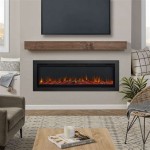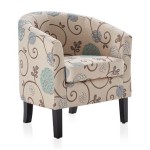Large Sectionals in Small Living Rooms: Making it Work
Integrating a large sectional into a small living room might seem counterintuitive. However, with careful planning and design considerations, a sectional can not only fit comfortably but also enhance the functionality and aesthetic appeal of a compact space. This article explores the strategies and principles for successfully incorporating a large sectional into a smaller living room.
Key Considerations for Choosing a Sectional
Selecting the right sectional is crucial for optimizing space utilization. Consider the following factors:
- Scale and Proportion: Opt for a sectional that is appropriately scaled to the room's dimensions. Avoid overwhelmingly large or bulky pieces that dominate the space.
- Configuration: L-shaped or chaise sectionals are often suitable for small living rooms, offering ample seating without excessive bulk.
- Low Profile: Sectionals with lower backs and arms create a sense of airiness and prevent the room from feeling cramped.
Maximizing Space with Strategic Placement
Strategic placement is paramount for creating a balanced and functional layout. Consider these placement strategies:
- Corner Placement: Utilize corners to anchor the sectional and maximize floor space.
- Floating the Sectional: Positioning the sectional slightly away from the walls can create an illusion of spaciousness.
- Defining Zones: A strategically placed sectional can help delineate distinct areas within an open-plan living space.
Creating an Illusion of Space with Color and Material
Color and material choices significantly impact the perceived size of a room. The following strategies can help create a sense of airiness:
- Light and Neutral Upholstery: Light-colored fabrics reflect light, making the room appear larger. Neutral tones create a cohesive and less cluttered look.
- Leggy Sectionals: Sectionals with exposed legs create visual space underneath the furniture, enhancing the feeling of openness.
- Reflective Surfaces: Incorporating mirrors and other reflective surfaces can visually expand the room by bouncing light.
Optimizing Functionality with Multi-Purpose Furniture
Incorporating multi-functional furniture pieces can enhance the practicality of a small living room with a large sectional. Here are a few examples:
- Storage Ottomans: Ottomans with built-in storage provide a place to stow away blankets, pillows, or other items, keeping the room clutter-free.
- Lift-Top Coffee Tables: Coffee tables with lift-top mechanisms can serve as a dining surface or a workspace, maximizing functionality.
- Modular Sectionals: Modular sectionals offer flexibility, allowing for reconfiguration to suit different needs and occasions.
Enhancing Visual Flow with Lighting and Accessories
Proper lighting and carefully chosen accessories can further contribute to a sense of spaciousness. Implement these techniques:
- Ample Natural Light: Maximize natural light by keeping window treatments minimal and using sheer curtains or blinds.
- Layered Lighting: Incorporate a combination of ambient, task, and accent lighting to create a well-lit and inviting atmosphere.
- Strategic Accessory Placement: Avoid cluttering surfaces with excessive accessories. Choose a few carefully placed items that complement the room's décor.
Maintaining Balance and Proportion
Maintaining visual balance is essential for creating a harmonious and inviting space. The following principles can help achieve this:
- Visual Weight: Balance the visual weight of the sectional with other furniture pieces and décor elements.
- Negative Space: Embrace negative space to prevent the room from feeling overcrowded.
- Vertical Space: Draw the eye upwards by incorporating tall plants, artwork, or floor lamps, creating a sense of height.
Creating a Cohesive Design Scheme
A cohesive design scheme ties the room together and enhances the overall aesthetic. Consider these elements:
- Color Palette: Stick to a limited color palette to create a sense of unity and avoid visual clutter.
- Texture and Pattern: Incorporate texture and pattern through throw pillows, blankets, and rugs to add visual interest without overwhelming the space.
- Focal Point: Create a focal point in the room, other than the sectional, to draw the eye and create a sense of balance.
Integrating a large sectional into a small living room requires thoughtful planning and execution. By following these design principles, it's possible to create a stylish and functional space that maximizes comfort and visual appeal without compromising on space.

Trick Of The Trade Sectional Sofas In Small Spaces

Ivory Sectional Sofa With Stained Wood Coffee Table

Small Living Room Decor Ideas With A Sectional

Sectional Sofa For Small Living Room Blushing Bungalow So Cute You Ll Blush

Ideas For Living Room Layouts With Sectionals

7 Things To Consider Before You Buy A Sectional Homzie Designs

51 Inspiring Small Living Rooms Using All Available Space
The Ultimate Sectional Sofa Guide

How To Arrange A Living Room With Sectional Four Generations One Roof

The Best Sectionals For Small Spaces Won T Clutter Your Living Room








